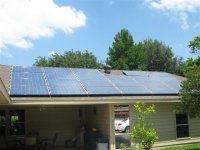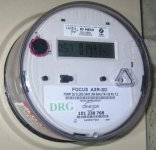Lt CHEG
Platinum Member
Excellent project. I'm hoping to see more of these projects so that the unit prices will decrease. I don't think that I can justify the cost of one of these systems myself at this time but perhaps in the future. I'm thinking that when we start building our new place I will probably spend a little bit extra in the beginning to make it easier to add a PV system of some sort in the future rather than spending more to replace stuff later on. Honestly I'm more of a fan of wind power and prefer the looks of a windmill to the looks of a PV array, but after doing a little research in some books and on the internet my area is not particularly suited to wind power. Actually it looks like we'd be better off with PV as far as alternative energy is concerned but at this point in time, with us being as far north as we are the costs are just too high. I applaud you for taking underaking this project and I truly wish that more people would follow suit. If a lot more people undertook this sort of project and economies of scale kicked in, I might be able to justify a PV system if it was about 25% less.


